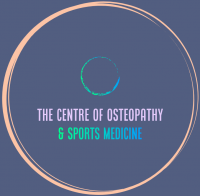Plantar fasciitis is a painful foot condition caused by inflammation of the plantar fascia – the thick band of tissue that connects the heel bone to the toes. This condition is common among runners due to the repetitive stress placed on the foot while running. The pain associated with plantar fasciitis is usually felt in the heel or arch of the foot and can range from mild to severe. It is often worse in the morning or after prolonged periods of standing, walking or running.
Conservative Treatment Methods for Plantar Fasciitis
While plantar fasciitis can be a painful and frustrating condition, there are several conservative treatment methods that can help alleviate symptoms and promote healing. These include:
Osteopathy
Osteopathy is a form of manual therapy that uses hands-on techniques to relieve pain, reduce inflammation and improve mobility. Osteopaths can help treat plantar fasciitis by manipulating the muscles and joints in the foot and ankle, which can help reduce tension and improve blood flow to the affected area.
Rehab Exercises
Stretching and strengthening exercises are an essential part of any plantar fasciitis treatment plan. Exercises can help improve flexibility and strength in the foot and ankle, reducing the risk of future injury. Common exercises for plantar fasciitis include calf stretches, toe curls and towel scrunches.
Shockwave Therapy
Shockwave therapy is a non-invasive form of treatment that uses sound waves to stimulate healing in the affected area. This therapy can help reduce pain and inflammation and promote tissue regeneration. While shockwave therapy can be effective for some patients, it is not suitable for everyone and should only be performed by a trained professional.
Sports Massage
Sports massage can help reduce tension in the muscles and promote blood flow to the affected area. This can help reduce pain and inflammation associated with plantar fasciitis. A massage therapist can use a variety of techniques, including deep tissue massage and trigger point therapy, to help alleviate pain and promote healing.
Conclusion
Plantar fasciitis can be a painful and frustrating condition, but with the right treatment, most people can make a full recovery. Conservative treatment methods such as osteopathy, rehab exercises, shockwave therapy and sports massage can help reduce pain and promote healing. If you are experiencing symptoms of plantar fasciitis, get in touch with an experienced osteopath, as it is important to seek treatment from a qualified healthcare professional as soon as possible.

